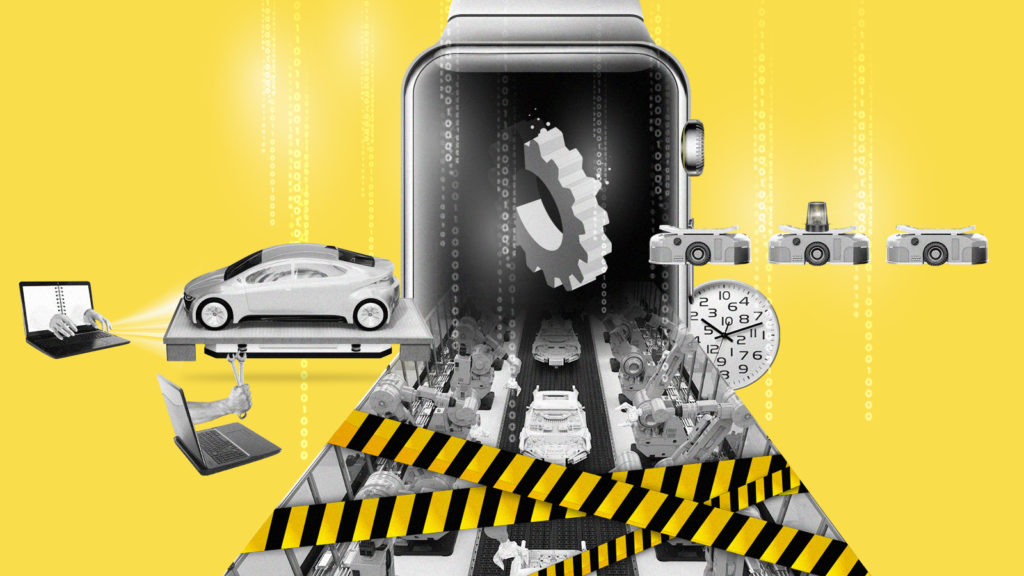In 1913, Henry Ford used an assembly line in his factory for the first time – and increased his production eightfold. Since then, the world has changed enormously. Vehicle production has become so complex that the assembly line, despite robot support, can no longer be considered the only truth – because this is designed more for making exact copies as quickly as possible and less for the increasingly demanded batch size 1.
More agility, more flexibility and more automation are required. This is what Automated Guided Vehicles (AGV) promise: mobile robots that can move around the production hall and take on various tasks. But where there is so much light, there is also always shadow: Flexibility also means an increase in complexity. AGVs place new demands on planning, control and maintenance.
Everything different?
Machine breakdowns or even a standstill is still a worst-case scenario in manufacturing. Faster detection and elimination of unplanned machine downtimes can increase daily production by an average of ten percent.
A machine is a machine – and it must be maintained. The aspect of maintenance as a critical element in production is therefore also relevant for the Smart Factory, in which everything is constantly in motion. Whether the conveyor system breaks down or the AGV: neither is optimal. What does change, however, are the possibilities for maintenance – and thus the chance to reduce downtime.
Thinking ahead instead of following behind
In production based on AGVs, depending on the machine, there are always free cycle times that can be used for maintenance. With appropriate forward planning, it is therefore possible to act without any interruption to production.
With the help of machine data, it is also possible to determine the optimal time to take a maintenance measure. Not only can parameters such as throughputs, revolutions or similar be taken into account, but several maintenance tasks can also be combined. This significantly reduces the number of maintenance windows and increases plant availability.
Pop-up “Standstill”: Yes where is it now?
It becomes more difficult, however, when problems occur unexpectedly: Whereas previously every machine was in a fixed location, in the new world the maintenance staff first has to know where the problem is at the moment.
The more complex the processes in the production hall become, the more important it is for production and maintenance to work closely together. A common system is therefore indispensable as a basis for planning and communication. Excel- or paper-based coordination and documentation of maintenance activities is neither efficient nor process-safe. Needs-oriented maintenance can only be ensured with considerable effort.
With an intelligent software solution, machinery can be centrally monitored and problems detected in good time. The status of areas, lines, machines and individual process devices can be tracked in almost real time. The more complex the processes become, the more important human-machine and human-human communication becomes. Accordingly, data transmission in near real time and communication via mobile devices are also becoming increasingly important for maintenance management.
Do you want to optimise your maintenance management? Our experts are available to help you solve your challenges and find hidden optimisation potential! Find out more about our total productive maintenance software!
